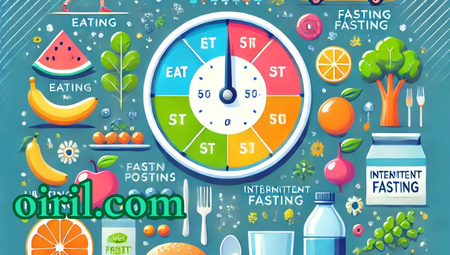Losing weight in a healthy and sustainable way requires a delicate balance between diet and exercise. While many people focus on one or the other, the most effective approach to long-term weight management combines both. In this article, we’ll explore how to strike that balance, why it’s essential, and provide actionable tips for creating a harmonious weight-loss plan that supports your overall health.
The Importance of Both Diet and Exercise in Weight Loss
To understand why balancing diet and exercise is crucial, it’s important to first recognize the role each plays in the weight loss process.
- Diet: Your food intake largely determines the number of calories you consume. To lose weight, you must consume fewer calories than your body burns, creating a caloric deficit. However, the quality of those calories matters too. A diet high in whole foods, like vegetables, fruits, lean proteins, and whole grains, fuels your body with the nutrients it needs while keeping your caloric intake in check.
- Exercise: While diet helps control your caloric intake, exercise increases your calorie expenditure. Regular physical activity not only helps burn calories, but it also boosts metabolism, improves muscle tone, and enhances overall physical and mental well-being. Exercise, especially strength training, also helps prevent muscle loss during weight loss, ensuring that the weight you shed is primarily fat, not muscle.
Balancing diet and exercise means that neither aspect is neglected, allowing you to achieve sustainable and healthy weight loss without compromising your energy levels or overall health.
How Diet and Exercise Work Together
Diet and exercise complement each other in a way that maximizes your weight loss efforts. Here’s how they work in synergy:
Caloric Deficit Creation: As mentioned earlier, weight loss happens when you burn more calories than you consume. Diet is the easiest way to create a calorie deficit, but exercise accelerates the process. For example, cutting 500 calories from your diet daily and burning an additional 500 calories through exercise can result in a deficit of 1,000 calories, translating into about 2 pounds of weight loss per week.
Muscle Preservation: When you lose weight solely through diet, there’s a risk of losing muscle mass along with fat. Exercise, particularly resistance training, helps preserve lean muscle tissue while promoting fat loss. The more muscle you retain, the higher your resting metabolic rate (RMR), which means you’ll burn more calories even when you’re not working out.
Boosting Metabolism: Certain types of exercise, like high-intensity interval training (HIIT) and strength training, have a significant impact on your metabolism. These activities create an afterburn effect, meaning your body continues to burn calories at an elevated rate long after your workout is over.
Supporting Long-term Weight Maintenance: Research has shown that people who successfully maintain weight loss for extended periods combine both healthy eating and regular physical activity. Exercise helps regulate hormones that control hunger and appetite, making it easier to stick to a balanced diet. Meanwhile, a nutrient-dense diet provides the energy and nutrients needed to sustain an active lifestyle.
Steps to Achieve the Right Balance
Finding the right balance between diet and exercise doesn’t mean you have to follow a rigid plan. Instead, it’s about making small, sustainable changes that align with your lifestyle. Here’s how you can achieve that balance:
Set Realistic Goals
Before diving into a new diet or exercise routine, it’s important to set realistic and achievable goals. Losing 1-2 pounds per week is considered healthy and sustainable. Avoid extreme diets or overly intense workout plans that you can’t maintain long-term. Instead, focus on making gradual changes that you can stick with.
Prioritize Nutrient-Dense Foods
Focus on quality over quantity when it comes to your diet. Instead of obsessing over calories, prioritize nutrient-dense foods that provide essential vitamins, minerals, and fiber. These include:
- Leafy greens and vegetables
- Lean proteins such as chicken, turkey, fish, and tofu
- Whole grains like quinoa, brown rice, and oats
- Healthy fats from sources like avocados, nuts, seeds, and olive oil
- Low-sugar fruits like berries, apples, and pears
These foods will keep you fuller for longer, stabilize blood sugar levels, and prevent overeating. Avoid processed foods, sugary snacks, and beverages high in empty calories, as they provide little nutritional value and contribute to weight gain.
Create a Caloric Deficit
To lose weight, you need to be in a caloric deficit, but it’s important not to cut too many calories. A safe range is reducing your daily caloric intake by 500-750 calories. Anything more extreme can lead to muscle loss, slowed metabolism, and a lack of energy for exercise.
Use an online calculator to determine your Total Daily Energy Expenditure (TDEE), which accounts for your activity level and other factors. From there, aim to eat slightly below that number while ensuring you get enough nutrients to support your workouts and daily activities.
Incorporate a Balanced Workout Routine
A well-rounded exercise plan should include a mix of aerobic (cardio) and anaerobic (strength training) exercises. Both types of exercise are important for overall health and weight loss.
- Cardio: Activities like walking, jogging, swimming, or cycling help burn calories and improve cardiovascular health. Aim for at least 150 minutes of moderate-intensity cardio or 75 minutes of vigorous-intensity cardio per week, as recommended by the American Heart Association.
- Strength Training: Building muscle is crucial for maintaining a healthy metabolism and body composition. Incorporate strength training exercises 2-3 times per week, focusing on major muscle groups (legs, back, chest, shoulders, arms, and core). You can use free weights, resistance bands, or bodyweight exercises like squats, push-ups, and lunges.
Listen to Your Body
While it’s important to challenge yourself, overtraining or extreme dieting can lead to burnout, injury, or illness. Make sure you’re giving your body enough rest and recovery time. If you’re feeling fatigued, sore, or unmotivated, it might be time to adjust your routine or take a rest day.
Additionally, pay attention to how different foods and exercises make you feel. Some people thrive on a low-carb diet, while others perform better with more carbohydrates. Similarly, some may prefer yoga or pilates to high-intensity workouts. Find what works for your body and preferences, and build a plan around that.
Stay Consistent
Consistency is the key to success in any weight-loss journey. It’s not about perfection but making healthier choices most of the time. Don’t get discouraged by occasional setbacks or indulgences—what matters most is that you stay committed to your long-term goals.
Keep track of your progress by journaling your meals, workouts, and feelings. This can help you identify patterns, track improvements, and stay motivated. Celebrate your successes along the way, no matter how small they may seem.
Common Mistakes to Avoid
As you work on balancing diet and exercise, be mindful of these common mistakes:
- Over-reliance on exercise to lose weight: Exercise is an important tool for weight loss, but it’s not a license to eat whatever you want. It’s much easier to consume calories than burn them, so pairing exercise with a mindful diet is crucial.
- Cutting out entire food groups: Restrictive diets that eliminate entire food groups (like carbs or fats) are often unsustainable and can lead to nutrient deficiencies. Instead, aim for a balanced diet that includes all macronutrients in moderation.
- Ignoring rest and recovery: Rest days are just as important as workout days. Overtraining can lead to injury, fatigue, and hormonal imbalances that may stall weight loss progress.
Balancing diet and exercise is the key to healthy, sustainable weight loss. By focusing on nutrient-dense foods, creating a moderate caloric deficit, and incorporating a mix of cardio and strength training, you can achieve your weight-loss goals while improving your overall health. Stay consistent, listen to your body, and make adjustments as needed to create a plan that works for you in the long term.





